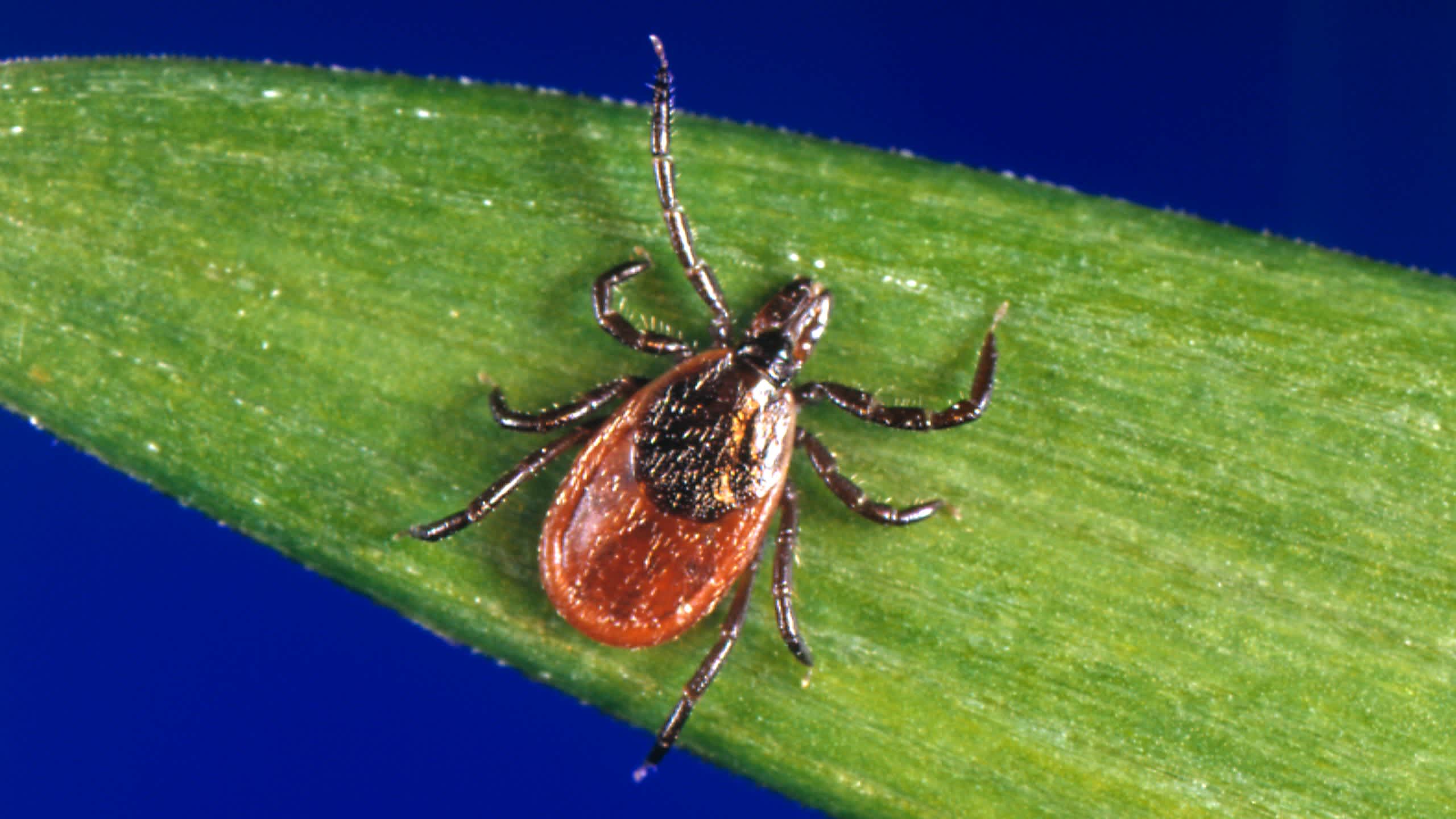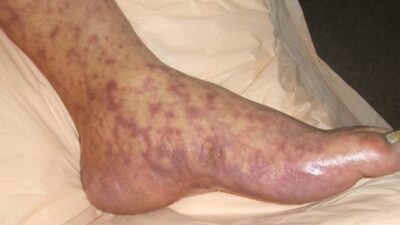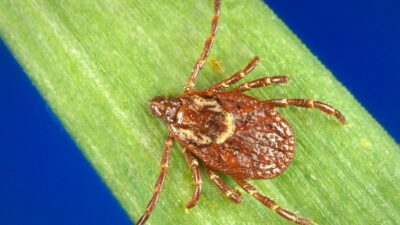

With the arrival of summer, an unassuming threat looms. This is the season to enjoy the outdoors, whether it’s hiking, camping, biking, or engaging in various lakeside and water-based activities. But through carefree activities, there’s a silent predator, one that attacks without warning, and if left unprotected, can lead to disease. Ticks, or the Ixodidae (hard ticks) and Argasidae (soft ticks) families, are the blood sucking vampires that could ruin a family adventure.
Living in the Midwest, not far from one of the Great Lakes, I’ve had friends and family members suffer from tick bites that have led to illnesses like Lyme Disease. While many bacterial tick-borne diseases respond well to antibiotics when diagnosed early, some, such as Powassan or Heartland virus, currently have no specific treatment and can cause serious complications. Thankfully, modern medicine can effectively manage most tick-borne diseases; however, if left untreated or undiagnosed, any of them can cause prolonged health issues. In this article, we will discuss various tick diseases, categorize their types, outline symptoms and treatments, and examine the species of ticks that cause these diseases, as well as their geographical prevalence. Other articles in this series will cover tick bite prevention and how to remove and treat tick bites.
**Disclaimer:** The information and photos in this article are sourced from www.cdc.gov/ticks. The CDC provided any materials listed. Any links to the materials on the CDC, ATSDR, or HHS websites do not imply endorsement by CDC, ATSDR, HHS, or the United States Government of me or OutdoorHub. Materials are otherwise available on the agency website for no charge.
Diseases
Ticks can transmit bacteria, viruses, and parasites throughout North America. They spread pathogens by feeding on unsuspecting humans and animals. Unfortunately, many tick-borne diseases share similar signs and symptoms. Below is a list of diseases ranging from common to rare and relatively unknown.
- Anaplasmosis (bacterial): Spread by blacklegged and western blacklegged ticks, this condition presents with signs such as fever, headache, chills, and muscle aches. Symptoms typically begin 1 to 2 weeks after the bite. Doxycycline is a common treatment option. Cases are frequently reported in the eastern United States.

- Babesiosis (Parasitic): The Disease is spread through bites from blacklegged deer ticks. Many people do not experience symptoms or feel unwell. However, if symptoms do occur, individuals may experience flu-like symptoms. The parasite attacks red blood cells, which can lead to hemolytic anemia, a condition that arises when red blood cells are destroyed faster than they can be replaced. Treatment is initiated only if symptoms are present. Most cases occur in the Northeast and Midwest.
- Bourbon Virus (Viral): A rare disease spreads through infected ticks, with cases reported in the Midwest and South. Symptoms may include fever, fatigue, rash, headache, body aches, nausea, and vomiting. Due to its rarity, no vaccines or medicines are available for prevention or treatment. The disease was first identified in 2014.
- Colorado Tick Fever (Viral): A rare viral disease spread by ticks, this illness causes symptoms such as fever, chills, headache, body aches, and exhaustion. Infections are transmitted by the Rocky Mountain wood tick, which is found in the western United States and Canada. While no vaccines or medications are available, most individuals who become ill experience a mild form of the disease and recover completely. In some cases, fatigue lasts for several weeks before recovery occurs.
- Ehrlichiosis (bacterial): This group of diseases is transmitted by Lone Star and Blacklegged ticks. Symptoms include fever, chills, headaches, muscle aches, and occasionally, upset stomachs. Doxycycline is the standard treatment for both adults and children.
- Hard Tick Relapsing Fever (bacterial): Borrelia miyamotoi, a relative of the bacteria that cause Lyme disease, can cause relapsing fever and is transmitted by blacklegged ticks. Symptoms are usually mild, with most individuals experiencing only a single episode of fever. According to the CDC, relapsing fever occurs in 10% of cases. Other symptoms may include chills or shakes, fatigue, nausea or vomiting, headaches, and muscle and joint aches. Generally, symptoms appear two weeks after the bite, but can occur sooner. People often recover without treatment. Soft ticks cause most cases of relapsing fever in the U.S..
- Heartland Virus (viral): spread by infected ticks. Symptoms of the Heartland Virus include fever, fatigue, decreased appetite, nausea, diarrhea, and muscle or joint pain. Most cases have been reported from the eastern, southeastern, and south-central regions of the United States. Currently, there is no vaccine or treatment available for the virus.
- Lyme Disease (bacterial): Caused by the bite of blacklegged ticks, Lyme disease is among the most common tick-related illnesses, especially in my region of the Midwest. Symptoms include fever, headache, fatigue, and a skin rash known as erythema migrans. If untreated, Lyme disease can spread to the joints, heart, and nervous system. When accurately diagnosed, it can be treated with antibiotics. Most cases occur in the Eastern half of the United States.
- Powassan Virus (Viral): Powassan, transmitted through tick bites, is generally considered rare, but more cases are emerging. Symptoms include fever, headache, vomiting, and weakness. Currently, there are no vaccines or treatments available for the disease. Most reported cases have occurred in the Northeast and Great Lakes regions. If the disease progresses, it can lead to inflammation of the brain or the membranes surrounding the brain and spinal cord.
- Rickettsia parkeri rickettsiosis (bacterial): A group of diseases transmitted by the bites of infected ticks and mites. Symptoms include a rash at the bite site, headaches, and muscle aches. The recommended treatment is doxycycline. Rickettsia parkeri rickettsiosis is also referred to as spotted fevers. It is important to note that Rickettsia parkeri rickettsiosis is a milder, related disease, but distinct from Rocky Mountain Spotted Fever.
- Rocky Mountain Spotted Fever (bacterial): Rocky Mountain Spotted Fever (RMSF), caused by Rickettsia rickettsii, is the most severe spotted fever. American dog ticks, brown dog ticks, and the Rocky Mountain wood tick are known to transmit Rocky Mountain Spotted Fever. Symptoms include fever, headache, rash, nausea or vomiting, stomach pain, muscle pain, and loss of appetite. The rash is the most recognizable sign of the disease, typically appearing within 2 to 4 days after a fever begins. It can present as red splotches or pinpoint dots. RMSF can be fatal if not treated promptly with doxycycline. Patients who recover from severe RMSF may experience permanent damage, including limb amputation due to blood vessel damage, hearing loss, or even mental disabilities. Currently, there is no vaccine available to prevent the illness. Cases of the disease occur throughout the United States and Mexico.


- Soft Tick Relapsing Fever (bacterial): spread by soft-bellied ticks of the genus Ornithodoros. Common symptoms of STRF include fever, headache, muscle aches, and chills. The disease is episodic, characterized by several days of fever followed by a week without fever, then fever again. This cycle can repeat multiple times without proper treatment. Identifying this disease can be challenging because most bites from soft-bodied ticks last less than half an hour and are typically painless. STRF primarily occurs in the mountainous western regions and parts of Texas. Antibiotics are used for treatment.
- STARI (bacterial): Southern Tick-Associated Rash Illness is transmitted by Lone Star ticks. STARI is characterized by a red, expanding lesion around the bite area. STARI is often found in the Southern United States, where Lyme disease is rare. Aside from the rash, symptoms include fatigue, fever, headache, and pain in the muscles and joints. Researchers are uncertain about the causes of STARI. However, they know it is not caused by the same bacteria as Lyme Disease. Because the cause of STARI remains unclear, there’s no confirmed treatment. However, physicians often prescribe antibiotics such as doxycycline as a precaution, especially since symptoms resemble early Lyme disease..
- Tularemia (bacterial): A potentially serious illness spread by tick and deer fly bites, as well as contact with infected animals. Symptoms vary widely but can be treated with antibiotics.
- 364D Rickettsiosis (bacterial): 364D Rickettsiosis is a specific form of spotted fever caused by Rickettsia philipii, typically transmitted by Pacific Coast ticks. While related to other spotted fevers, such as R. parkeri rickettsiosis, it is distinct in terms of the pathogen and its region of origin.
Zooming Out
It’s difficult to articulate the data surrounding tick-reported cases per year for all diseases, and misdiagnosis further complicates matters. However, the CDC does provide data on a few of them. For this, let’s focus on Lyme disease, one of the more commonly known tick-borne illnesses. In 2010, there were just over 30,000 reported cases in the United States. In 2022, that number jumped to 62,428. In 2023, that number skyrocketed to 89,468 (note, numbers for 2020 and 2021 are incomplete). Why such a dramatic rise? A Mayo Clinic article explains that recent tracking rule changes have significantly increased reported cases.
“The new Lyme disease case definition allows us to get a more accurate count of Lyme disease cases in high-incidence areas, which will improve our understanding of Lyme disease and its impact on people living in the United States,” says Dr. Bobbi Pritt, director of the Clinical Parasitology Laboratory at Mayo Clinic. Essentially, the CDC is increasing efforts to track Lyme (and all tick) cases. The more data collected, the better. With this information, institutions like the CDC and the Mayo Clinic can support local medical practitioners in high-frequency areas and educate the public on prevention and identification. But more on this in future articles.
Sources & Further Reading
-
CDC: Clinical Guidance for Hard Tick Relapsing Fever (B. miyamotoi)
-
CDC: Rickettsia parkeri Rickettsiosis & Other Spotted Fevers
-
CDC MMWR: Soft Tick Relapsing Fever — United States, 2012–2021
-
University of California: Rickettsia philipii (Pacific Coast Tick Fever)
-
Emerging Infectious Diseases: Hard Tick Relapsing Fever (B. miyamotoi), US 2013–2019
Trending Products












